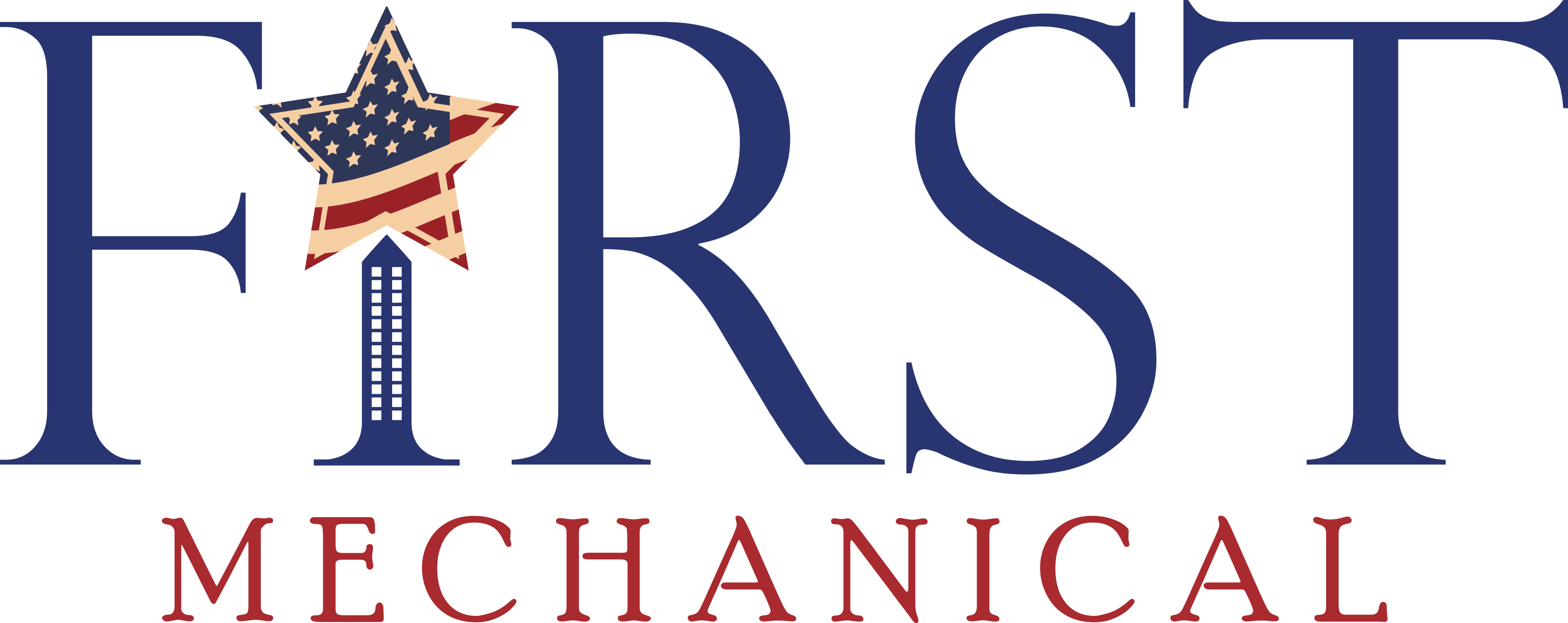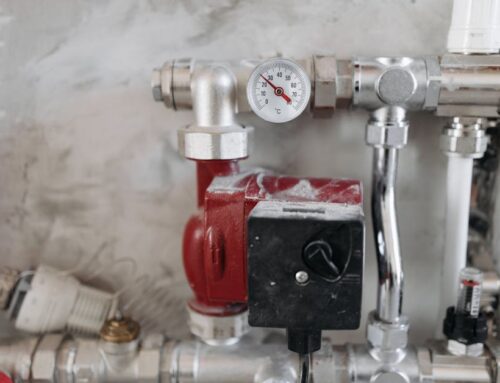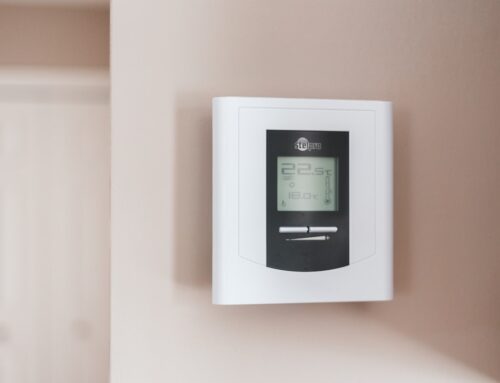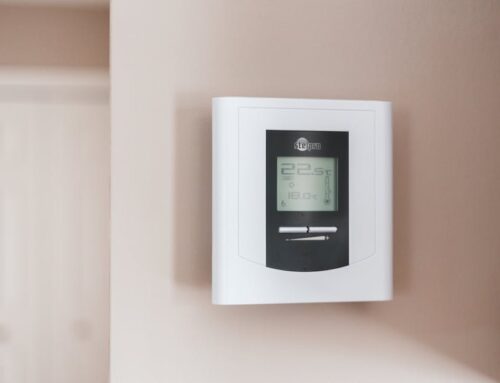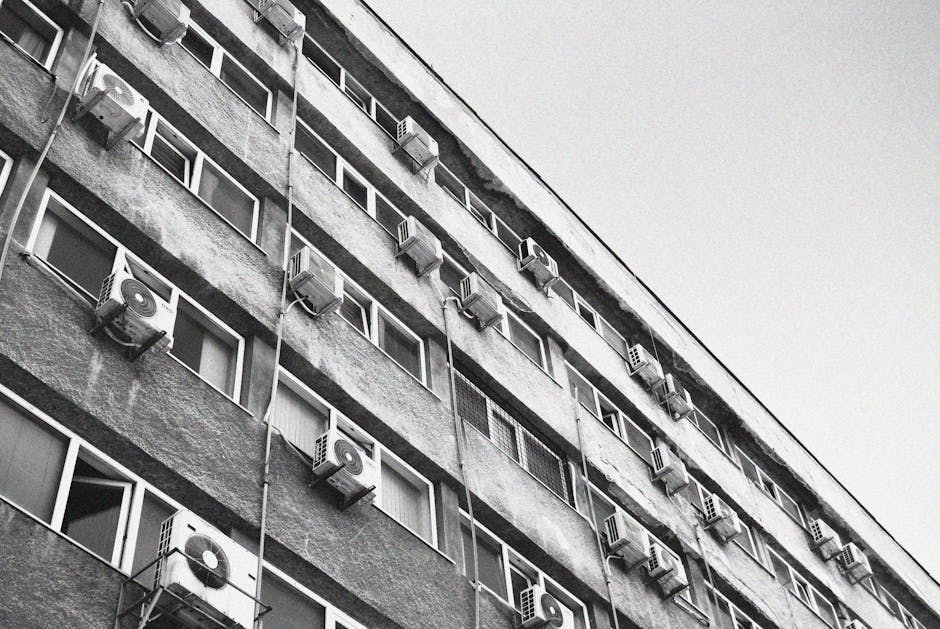
HVAC designs are crucial for creating comfortable, efficient, and safe environments in countless buildings worldwide. From high-rise office towers to busy restaurants and sprawling warehouses, an effective HVAC system ensures optimal indoor air quality and temperature control. Planning and engineering are central to the success of these systems.
When searching for an HVAC design solution, keep these key points in mind:
- Ensure precise calculations and align with industry standards.
- Hire professionals for optimal design and energy efficiency.
- Regular maintenance prevents costly repairs and extends system lifespan.
HVAC systems are not just about heating and cooling; they encompass intricate planning and engineering to meet diverse building needs. Smart design addresses important factors like system size and energy efficiency, vital for locations with specific climate challenges like Tampa, FL.
Partnering with industry experts ensures a system custom to both the building’s needs and the budget, delivering dependable comfort. Neil Fimbel of HVAC Designs is noted for his expertise and trusted by long-standing partners such as Habitat for Humanity.
Understanding HVAC Design
HVAC design is all about creating the perfect indoor environment. It stands for Heating, Ventilation, and Air Conditioning. Let’s break down each part to understand how they work together to keep spaces comfortable and efficient.
Heating
Heating is essential for maintaining warmth in buildings during colder months. The design of a heating system must consider the size of the space and the climate. For example, Tampa, FL, might not need as robust a heating system as a place with colder winters. Efficient heating systems ensure that energy is not wasted, keeping costs down.
Ventilation
Ventilation is the process of exchanging indoor and outdoor air to improve air quality. Good ventilation removes stale air and pollutants, replacing them with fresh air. This is crucial for maintaining a healthy and comfortable indoor environment. Proper ventilation design considers factors like building layout and usage patterns to ensure that air circulates effectively.
Air Conditioning
Air conditioning cools the air and removes humidity, making indoor spaces comfortable during hot weather. In warm climates like Florida, effective air conditioning is a must. Modern systems are designed to be energy-efficient, reducing the environmental impact.
Ambient Environment
The ambient environment refers to the overall indoor atmosphere created by the HVAC system. It includes temperature, humidity, and air quality. A well-designed system creates a balanced ambient environment, enhancing comfort and productivity.
Neil Fimbel, an expert in HVAC designs, emphasizes the importance of precise calculations and adherence to industry standards to achieve the best results. This attention to detail ensures that each system is custom to its specific environment, providing reliable comfort and efficiency.
By focusing on these core elements, HVAC designs can transform any space into a comfortable haven, regardless of the outside conditions. Whether you’re in a hospital, office, or restaurant, a well-thought-out HVAC system makes all the difference.
Types of HVAC Systems
When it comes to HVAC designs, there are several types of systems to choose from. Each has its unique features and is suited for different needs and spaces. Let’s explore the main types:
Ducted Systems
Ducted systems are the backbone of many HVAC designs. They use a network of ducts to distribute air throughout a building. These systems are great for maintaining consistent temperatures across large spaces. However, they require careful planning and installation to ensure efficiency.
Split System
A split system is one of the most common HVAC configurations. It consists of an outdoor unit and an indoor unit. This setup is ideal for homes and small offices. It’s efficient and typically easier to install than ducted systems.
Hybrid Split System
The hybrid split system is a versatile option. It combines the benefits of a standard split system with an energy-efficient heat pump. Users can switch between gas and electric power, optimizing for cost and efficiency.
Packaged Heating and Cooling
Packaged systems are all-in-one units. They contain both heating and cooling components in a single casing. This system is often used in homes without basements or crawl spaces. It’s compact and easy to install, making it a popular choice for smaller buildings.
Zoned System
Zoned systems offer precise control over individual areas, or zones, within a building. By using multiple thermostats, you can adjust the temperature in different rooms independently. This system is perfect for large homes or offices where different areas have varying heating or cooling needs.
Duct-Free Mini-Split
A duct-free mini-split system is similar to a traditional split system but without ducts. It’s ideal for retrofitting older buildings or adding climate control to specific areas. These systems are energy-efficient and offer flexible installation options.
Hydronic Heating
Hydronic heating uses water to transfer heat. It’s a popular choice for radiant floor heating. This system is efficient and provides a comfortable, even heat. However, it requires a more complex installation process.
Portable Spot Cooler
Portable spot coolers are standalone units. They’re perfect for cooling specific areas temporarily. These units are easy to move and don’t require installation. They’re great for events or spaces where permanent cooling isn’t needed.
Portable Heat Pump
Similar to spot coolers, portable heat pumps can provide both heating and cooling. They’re versatile and can be moved as needed. This makes them a good choice for temporary or supplemental climate control.
Choosing the right HVAC system depends on your specific needs and the space you’re working with. Each type offers unique advantages, whether you need efficiency, flexibility, or precise control.
HVAC Design in Commercial Spaces
When it comes to HVAC designs in commercial spaces, the requirements can be quite different from residential setups. Commercial HVAC systems need to be robust, efficient, and custom to the specific needs of the building and its occupants.
Commercial Design Build
In the commercial sector, design-build projects streamline the process by combining design and construction services. This approach allows for seamless integration of HVAC systems from the planning phase through to installation. It ensures that the HVAC system is perfectly suited to the building’s architecture and usage patterns.
Plan and Spec Work
Plan and spec work involves detailed planning and specifications for HVAC systems. This is often used in larger projects such as hospitals and office buildings. Here, every aspect of the HVAC design is carefully planned to meet strict industry standards and client requirements. This method is ideal for complex projects where precision is crucial.
Hospitals and Medical Facilities
In hospitals and medical facilities, HVAC systems play a critical role in maintaining a sterile and comfortable environment. These systems need to provide reliable air circulation, temperature control, and humidity regulation. They also often include specialized filtration systems to remove contaminants and pathogens from the air.
Manufacturing Warehouses
Manufacturing warehouses have unique HVAC needs due to their large open spaces and varying temperature requirements. Efficient systems are necessary to maintain optimal conditions for both workers and stored goods. Advanced technologies like variable refrigerant flow (VRF) systems can provide the flexibility and control needed in such environments.
Office Buildings
For office buildings, HVAC systems must balance comfort and efficiency. Occupant comfort is key to productivity, so systems often include zoning capabilities to customize temperatures in different areas. Smart controls and energy-efficient equipment help reduce operating costs while maintaining a pleasant working environment.
Restaurants and Strip Stores
Restaurants and strip stores also have specific HVAC needs. In restaurants, systems must handle kitchen exhaust and maintain comfortable dining areas. Strip stores require flexible HVAC solutions that can be adapted to different tenant needs. Here, compact and efficient systems are often preferred to maximize space and minimize costs.
By understanding the unique requirements of each commercial space, HVAC designs can be custom to provide optimal comfort, efficiency, and reliability. Whether it’s a hospital, warehouse, or restaurant, having the right HVAC system is crucial for the well-being of its occupants and the success of the business.
Energy Efficiency and Sustainability in HVAC
Energy efficiency and sustainability are more important than ever. HVAC designs play a critical role in creating systems that are both energy-efficient and environmentally friendly.
Sustainable Designs
Sustainable HVAC designs focus on reducing energy consumption and minimizing environmental impact. This involves using advanced technologies and materials that improve system efficiency. By designing systems that use less energy, we can significantly reduce greenhouse gas emissions and lower operational costs.
Energy-Efficient Technologies
Energy-efficient HVAC systems incorporate features like variable speed drives, smart thermostats, and energy recovery ventilators. These technologies optimize energy usage by adjusting the system’s operation to match the building’s needs.
For instance, variable speed drives allow motors to operate at less than full capacity, saving energy when full output isn’t needed. Smart thermostats, on the other hand, learn from user behavior to adjust temperatures automatically, ensuring comfort while minimizing energy use.
Hydrofluorocarbons and Greenhouse Gases
Traditional HVAC systems often use hydrofluorocarbons (HFCs) as refrigerants. While effective, HFCs are potent greenhouse gases that contribute to climate change. Newer systems are moving towards alternatives with lower global warming potential.
For example, some innovative systems use solid refrigerants or natural alternatives that are less harmful to the environment. By reducing reliance on HFCs, these systems help lower the carbon footprint of HVAC operations.
Hot and Cold Aisles
In data centers and similar environments, managing air temperature is crucial. Implementing hot and cold aisle configurations can improve energy efficiency. This setup involves aligning server racks in alternating rows of hot and cold air to optimize cooling efficiency.
By channeling hot air away from equipment and into dedicated hot aisles, cooling systems can operate more effectively. This reduces the amount of energy needed to maintain optimal temperatures, leading to significant energy savings.
Energy efficiency and sustainability are at the heart of modern HVAC designs. By embracing these principles, we can create systems that not only meet current demands but also protect our planet for future generations.
Frequently Asked Questions about HVAC Designs
What is HVAC Design?
HVAC design is all about creating systems that control the climate inside buildings. It stands for Heating, Ventilation, and Air Conditioning. These systems ensure that the indoor environment is comfortable and healthy. The design process involves careful planning and engineering to match the specific needs of a building. This includes calculating the right size of equipment, selecting the best system type, and ensuring energy efficiency.
Planning and Engineering
When planning an HVAC system, designers consider factors like building size, usage patterns, and local climate. This ensures that the system can efficiently heat, cool, and ventilate the space. Engineers use complex calculations to determine the right equipment size and layout. This prevents issues like inefficient energy use or inadequate temperature control.
Can You Make 6 Figures with HVAC?
Yes, it’s possible to earn a six-figure salary in the HVAC industry, especially with the right training and experience. Many HVAC technicians and contractors can achieve this level of income by specializing in high-demand areas or taking on complex projects.
Technician Training and Contractor Opportunities
Becoming an HVAC technician typically requires technical training and certification. Once certified, technicians can work in various settings, from residential to commercial. With experience, some technicians choose to become contractors. Contractors manage larger projects and teams, which can significantly increase earning potential. The demand for skilled HVAC professionals is growing, making it a lucrative career path.
What Size HVAC Do I Need for a 2000 Sq Ft House?
The size of the HVAC system needed for a 2000 square foot house depends on several factors, including climate, insulation, and the home’s layout. However, a rough estimate is that you might need a system with a capacity of about 3 to 4 tons.
Square Footage and Air Conditioner Size
To determine the exact size, HVAC professionals conduct a load calculation. This considers the home’s square footage, ceiling height, windows, and other factors. Getting the size right is crucial. An oversized system can lead to short cycling, while an undersized system may struggle to keep the home comfortable.
By understanding these key aspects of HVAC designs, homeowners and professionals can make informed decisions that improve comfort and efficiency.
Conclusion
At First Mechanical, we pride ourselves on offering comprehensive HVAC services custom to meet the diverse needs of our clients. Whether it’s installation, repair, or maintenance, our team is dedicated to delivering high-quality solutions that ensure comfort and efficiency in every commercial space.
Our expertise spans across various commercial settings, from busy office buildings to specialized medical facilities. We understand that each project is unique, which is why we provide customized solutions that are both effective and energy-efficient. Our commitment to excellence is evident in our fast response times and our ability to handle emergency repairs with professionalism and care.
Installation is more than just setting up equipment. It’s about designing a system that fits seamlessly into your building’s structure while maximizing performance and minimizing energy consumption. We focus on precision and attention to detail, ensuring that every component is perfectly aligned for optimal operation.
When it comes to repair, our skilled technicians are equipped to diagnose and resolve issues swiftly, minimizing downtime and disruption. Regular maintenance is also a cornerstone of our services. We believe in proactive care to extend the lifespan of your systems and prevent costly breakdowns.
First Mechanical is committed to providing top-notch commercial HVAC solutions that meet the highest standards of quality and reliability. Our team is here to support you every step of the way, ensuring your systems run smoothly and efficiently.
For more information on our services, visit our Commercial HVAC Installation & Repair Services page to explore how we can assist you in achieving optimal indoor climate comfort.
